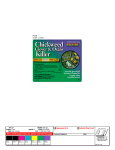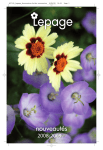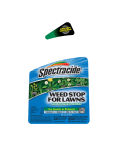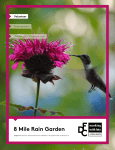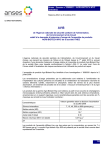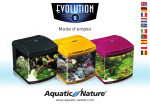Download Full Printable Lot Design - A Field Guide Working with Lots
Transcript
Volunteer Professional Volunteer + Professional Infilltrator Image Source: Dmitry Marochko, “Birch Grove.” 31 May 2009 via Flickr, CC BY-NC-SA 2.0 Field Guide | DFC-lots.com | Infilltrator 2 HELLO What is the lot design likely to cost? The estimated cost of the Infilltrator is over $5,500 and based on utilizing volunteer and professional labor. The Field Guide recommends hiring a professional for earthworks, lot preparation, and installation of the basement fill. The cost assumes that residents or volunteers have access to basic safety gear and garden tools. MY NAME IS Infilltrator How much upkeep will this lot design require? The Infilltrator provides a unique ‘fill’ amenity within the footprint of a recently demolished house — a luscious green rain garden that can manage stormwater from the roofs of up to two neighboring houses. This lot design incorporates the City of Detroit’s alternative fill practices as the drainage base for a new type of drainage system. The alternative fill consists of concrete foundations, walls, etc. excavated from recently demolished house and crushed in place. The Infilltrator takes advantage of the porous space existing between the large aggregate by creating a rain garden. This lot design has a sun and shade planting option. For more information refer to DFC-lots.com Cost $50 - 1,000 Two planting option are provided and both will require a medium level of maintenance to thrive. Refer to maintenance list on page 9 for each planting option maintenance requirements. Will the installation of this lot design require a professional? The installation of this lot design will require professional assistance for the first few steps. The Field Guide identifies volunteer opportunities if you, with the help and support of friends, family or neighbors, would like to construct the planting portion of this lot design. Please refer to the Step-By-Step section for guidance on professional and volunteer recommended steps. If you do not have the required support or feel unable to tackle the volunteer aspect of this lot design, a professional can construct the entire project. How long will it take to install this lot design? This lot design requires a professional for the completion of several steps. The projected installation time listed below is for volunteer opportunities listed in step-by-step section only. While people tackle projects differently, the Field Guide estimates installation time of the lot design to be one to two full weekends with volunteer group organized by a knowledgeable lot leader. The Field Guide recommends the help of at least five to eight healthy adults or youth to complete this lot design. The Field Guide assumes that the lot is ‘construction ready,’ and all equipment and materials required for the lot design have been acquired and are ready to use. $1,000 - 2,500 $2,500 - 5,500 $5,500 + People Volunteer Professional Volunteer + Professional Experience Beginner Intermediate Advanced Low Medium High Good Better Best Upkeep Stormwater Location Residential Lots in Full Sun to Shade Field Guide | DFC-lots.com | Infilltrator 3 Infilltrator Examples of Shade Plantings Section 1 - Birch Grove 2 - Forget Me Not Where Do I Grow? Grass Area 10’-0” Minimum from Adjacent House Depression with Trees and Groundcover, Match limits of Demolished Basement Grass Area 10’-0” Minimum from Adjacent House The Infilltrator is best constructed on a single lot and ideal for lots with recently demolished houses. Section Groundcover Tree Section Grass or Optional Groundcover Image Source: 1) Dmitry Marochko, “Birch Grove.” 31 May 2009 via Flickr CC BY-NC-SA 2.0; 2) Kostolany244, “Forget-me-not.” 19 April 2009 via Flickr CC By-NC 2.0. Field Guide | DFC-lots.com | Infilltrator 4 Before You Start ‘Construction Ready’ This lot design assumes that you have prepared the lot to a ‘construction ready’ state. ‘Construction Ready’ refers to a lot that is clean and clear of trash, hazardous objects, unwanted trees, brush and vegetation, fences, and other unwanted structures. It may be necessary to remove grass in preparation for your lot design. Refer to the Remove Your Grass box located on the right hand side of this page for more information. Is there an available water source near your lot? Consider how and where you will access water during and after construction to ensure that your plants can establish. If your lot is not ready for construction, refer to the Clean + Green lot design. You can find the lot design at DFC-lots.com. Call Before You Dig Locate underground utilities before beginning your lot design. MISS DIG provides a free service to Michigan residents by locating and marking utilities on requested properties. Call (800) 482-7171 or 811 at least three days before you plan to start digging on your lot. Test Your Soil Harmful pollutants have made their way into many urban soils. To proceed with awareness, consider having your soil tested before construction. Two great options are available: Soil testing is free to members of Keep Growing Detroit’s Garden Resource Program. Call (313) 757 – 2635 for more information or visit detroitagriculture.net. If you are not yet a member, you can work directly with Michigan State University’s (MSU) Extension Program. They have a Home Lawn and Garden Soil Test Mailer for $25. For more information call (888) 678 – 3464 or visit msusoiltest.com. If you are concerned about the presence of lead or other contaminants in your soil, call the Michigan Department of Health and Human Services at (866) 691 – 5323 or (800) 424 – LEAD. Remove Your Grass Need to remove grass in areas where you are constructing your lot design? There are many ways to remove unwanted grass. The first is to remove the grass and its root system by digging up the grass. Another option is to cover your lot with cardboard or a plastic tarp to smother your grass in darkness. It will take several weeks, but after being covered, the dead grass will be easier to remove. Till Safely Before you till, inspect your lot for signs of buried concrete or rubble that was not removed during the cleanup stage. Large debris can ruin tiller blades. When tilling, wear appropriate safety gear, such as covered boots with socks, long pants, safety glasses, dust mask, and ear protection. Make sure you understand the safe operating procedures of your tiller. Refer to the user’s manual. Field Guide | DFC-lots.com | Infilltrator 5 What You Need: Shopping List Shopping List Materials MaterialsList List The shopping list provides a breakdown of potential materials, tools, and resources required to construct this lot design. Materials ·· Geofabric, amount to be determined by basement size This shopping list is designed for a single lot (30 by 100 feet). ·· City of Detroit Approved Alternative Fill, 1 foot depth, amount to be determined by basement size ·· Organic Drainage Soil, amount to be determined by basement size ·· Mulch or Wood Chips, Three inch depth of mulch required, amount to be determined by basement size Tools + Resources ·· Downspout Disconnect: Standpipe cap, downspout elbow, downspout connection pipe, rubber cap, and hose clamp Suggested Tools ·· Safety Gear: Gloves, heavy work boots, tall socks, pants, long sleeve shirts, dust masks, protective eye wear, ear plugs, and hard hats (if using heavy machinery) ·· Garden Tools: Spades, shovels, rakes, trash bags, and wheelbarrows ·· Hacksaw and Screwdriver ·· Truck, for hauling imported soil, geofabric and City of Detroit Approved Alternative Fill ·· Ball Cart, for moving heavy trees Potential Water Sources ·· Garden Hose with potential extension hose Planting Option 1: Shade ·· Northern Maidenhair Fern, 750 plugs ·· Lady Fern, 750 plugs ·· Jack Frost Bugloss, 750 plugs ·· Variegated Bugloss, 750 plugs ·· Birch Trees, 6 pots or balled and burlapped Planting Option 2: Sun ·· Septic Field Wildflower Mix, 1 pound of seed ·· Germination Blanket, 1 roll (8 by 112.5 feet) ·· Sprinkler ·· Rain Barrel in addition to other water source ·· Downspout Disconnect (shown in lot design) Field Guide Resources Resources are available on the Field Guide’s web site. ·· Clean + Green ·· Tree Planting Detail ·· Perennials + Grasses Planting Detail ·· Bulb Planting Detail Remaining Lot (Optional) Groundcover ·· Low-Maintenance Fescue Mix, 11 to 13 pounds of seed ·· Germination Blanket, 3 roll (8 by 112.5 feet) Field Guide | DFC-lots.com | Infilltrator 6 Infilltrator Step-By-Step Let’s Start Want to create the Infilltrator? The Field Guide recommends hiring a professional for some tasks. Here are a few guiding principles to help you understand the tasks involved in the lot design and the steps appropriate for volunteers. Check off tasks as you go along. Lot Design Steps Professional Recommended: Prepare Your Lot Infill Basement Volunteer Opportunities: Planting Option 1 (Shade): Plant Trees Planting Option 1 (Shade): Plant Perennials Planting Option 2 (Sun): Sow Meadow Disconnect Your Downspout Maintain Your Lot Design Sow Remaining Lot This lot design provides two planting options depending on whether your lot is in sun or shade. Prepare Your Lot The Infilltrator is one of the more complex lot designs within the Field Guide. It is recommended that you hire a professional for these steps: Prepare Your Lot and Infill Basement. If you decide to construct this lot design without the recommended assistance of a professional, the Field Guide has provided guiding principles below to help assist you with the installation of the lot design. ·· The Field Guide recommends creating this design on a lot where a house has recently been demolished and a basement hole is present and unfilled. ·· The basement footprint is to be utilized as the size, shape, and dimensions of the Infilltrator lot design. The Infilltrator can be created without an existing or open basement but will require soil excavation. ·· The Infilltrator should be (minimum) ten feet from any adjacent houses, five feet from adjacent property lines and at least five feet from the sidewalk. ·· You do not need to kill grass in an open basement as earth sculpting and imported planting soil will suppress existing weeds. ·· Soil should be prepared for seeding by scarifying, raking, or tilling the soil four to six inches deep to loosen any compaction, allowing for easier seed germination and better water infiltration. ·· The Infilltrator can function as a rain garden or as a unique garden without the collection of stormwater. If the Infilltrator is to function as a rain garden, there should be (minimum) of one square foot for every ten square feet of stormwater area directed into your rain garden. The Infilltrator size shown on the included plan (640 square feet) can easily handle stormwater for two standard single family house sizes in Detroit. This rain garden is also large enough to collect stormwater from some commercial properties. Field Guide | DFC-lots.com | Infilltrator 7 Infill toInfilltrator InfiltrationStep-By-Step Garden Set-By Step Infill Basement The following are a few guiding principles for importing and backfilling an open basement hole. The Field Guide recommends hiring a professional to complete the earthworks portion of this lot design. ·· Demolished basement depths can vary, and no two sites are the same. ·· Calculate the length, height, and depth of basement to determine the amount of fill required. ·· Place geofabric on bottom and sides of basement and fill one foot depth (or required depth for basement) with City of Detroit approved alternative fill (crushed foundation) on top of geofabric. ·· City of Detroit approved alternative fill must be at least three feet below grade. Crushed foundation should not be larger than eight inches. ·· Once geofabric is in place, wrap geofabric around top of alternative fill (like a burrito). ·· Fill remainder of the hole with imported organic drainage soil or until it is filled six inches below adjacent grade for drainage or rain garden. Planting Option 1 (Shade): Plant Trees The Field Guide recommends planting 1.5 inch diameter trees; however, smaller or larger trees can be planted if preferred. Trees can be purchased in pots or balled and burlapped. If you decide to plant larger trees, speak with a professional or an educational group as older trees can be more difficult to establish. Plant trees as soon as possible after purchasing. If you cannot plant them the same day, do not leave unplanted trees in direct sunlight. Keep them in shade and well watered until you can plant them. (Trees dry out fast!) Identify the location where you wish to plant the trees. Dig a hole three times the width of the root ball and equal to the depth. Pots should be removed before placing the tree in the planting hole. Balled and burlapped root balls should remain wrapped until placed in hole. Unwrap the top 1/3 of the root ball and peel back the burlap once planted. Remove any twine, nails, or stakes. The root flare should be level with the ground when you place the tree in the hole. Water the root ball, then backfill the hole with the soil previously removed from planting. Add water to the tree every six inches as you backfill the hole. Compact the soil lightly after each watering until the hole is filled with soil and level with the adjacent ground. The Field Guide recommends adding three foot diameter by three inch depth of wood chips or mulch around trees. Keep wood chips or mulch a few inches away from tree trunks. For more guidance on tree planting refer to the Tree Planting Detail. Field Guide | DFC-lots.com | Infilltrator 8 Infill toInfilltrator InfiltrationStep-By-Step Garden Set-By Step Planting Option 1 (Shade): Plant Perennials Partly sunny to shade plantings are recommended for this Infilltrator shade option. Place plants in desired location, then remove plastic pots, loosen roots, and plant. The Field Guide recommends adding three inches of wood chips or mulch to the Infilltrator area. The amount of wood chips or mulch should be determined by the basement size. Adding wood chips or mulch will help suppress weeds. For more guidance on planting perennials refer to the Perennials + Grasses Planting Detail. Planting Option 2 (Sun): Sow Basement Meadow Seeding should take place in either spring (midMay to mid-June) or fall (mid October to end of November). Nativescape’s Septic Field seed mix is a good option for the Infilltrator; similar mixes are available from other suppliers. No cover crop is required for the seed mix. Although the seed mix is not being used over a septic field, the Septic Field Seed Mix is ideal for the basement meadow due to its great drainage capabilities. Nativescape suggests one pound of Septic Field Seed Mix per 1,000 square feet. The Field Guide recommends one pound of Septic Field Seed Mix for the Infilltrator area (16 by 40 feet). Once seeds have been mixed, spread seed across the Infilltrator area. You can do this by hand or with a hand-cranked whirlwind seeder. You will need to do this several times to get even coverage. Gently water seedlings daily until they are four to six inches in height. Placing a thin layer of straw or a germination blanket over seeded areas will help ensure your seed establishes by keeping seeds from blowing away and protecting them from birds. One 8 by 112.5 foot single net germination blanket will cover the meadow area. Germination blankets or straw can be purchased at most nurseries and garden stores, including Detroit Farm and Garden. Disconnect Your Downspout One of the easiest ways to collect stormwater is by disconnecting your downspout and directing it into your rain garden. Before you start, remember that disconnected downspouts should extend at least six feet from any house foundation and five feet from adjacent property or public sidewalk. Avoid disconnecting downspouts where they might discharge water across walkways, patios, or driveways or where they might be a tripping hazard. Do not disconnect directly over a septic system. Follow these steps to help you redirect your roof water into your rain garden. ·· Measure the existing downspout, and mark it approximately nine inches above sewer connection or standpipe. ·· Cut with a hacksaw and remove cut piece. ·· Plug or cap the sewer standpipe with a rubber cap secured by a hose clamp. Use screwdriver to tighten and secure cap. ·· Attach elbow joint over the downspout. ·· Add downspout extension to elbow joint. Extension should be length needed to carry water away from house and towards rain garden. ·· Secure pieces with sheet metal screws at each joint. Field Guide | DFC-lots.com | Infilltrator Infill toInfilltrator InfiltrationStep-By-Step Garden Set-By Step ·· Use plastic or concrete splashblocks, rocks, flagstone, or boulders at the end of the downspout to control erosion of soil and plants in the rain garden from stormwater. For more information, refer to DWSD’s How to Disconnect a Downspout document. Maintain Your Lot Design Plants require care and maintenance to thrive. Both planting options (shade or sun) will require weeding and watering. Planting Option 1 (Shade): Trees must be watered especially in the first year. Water weekly or as needed. The Field Guide recommends connecting with an arborist or taking a workshop on tree health and maintenance. The Greening of Detroit offers a great Citizen Forester program to interested residents. Perennial plants will require watering and weeding until it becomes established. Planting Option 2 (Sun): The meadow will require mowing in the first year. Cut your meadow back to four to six inches whenever it reaches above ten inches in height. After the first year, it is recommended to continue weeding and to mow your meadow in late fall or early spring to keep the meadow at its best. It will take about three years for the meadow to fully establish. Meadows are a work in progress. If you feel your meadow needs more color, it is okay to add additional plants, plugs, or seed mixes. Be creative and make it your own! 9 Field Guide | DFC-lots.com | Infilltrator 10 Infill toInfilltrator InfiltrationStep-By-Step Garden Set-By Step Sow Remaining Lot If you are seeking a lower maintenance alternative to a traditional lawn, the Field Guide recommends a fescue seed mix. If you follow the Infilltrator lot design you will need approximately 11 to 13 pounds of fescue seed mix for the remaining lot (2,360 square feet) and three 8 by 112.5 foot rolls of single net germination blankets. This family of floppy grasses is drought-resistant and requires one cutting (in August or September) per year. Fescue can be established in full sun to shade and should be seeded in spring (mid-March to mid-May) or fall (August to September). Soil should be prepared for seeding by scarifying, raking, or tilling the soil four to six inches deep to loosen any compaction, allowing for easier seed germination and better water infiltration. Apply seed mix to a damp lot. Sow seed across the remaining lot by using a seed spreader or by hand. A seed rate of five pounds per 1,000 square feet is recommended. Gently water seedlings daily until they are four to six inches in height. Placing a thin layer of straw or a germination blanket over seeded areas will help ensure that your seed establishes by keeping seeds from blowing away and protecting them from birds. Germination blankets or straw can be purchased at most nurseries and garden stores. Visit the Resources page on the Field Guide’s web site (DFC-lots. com) to discover other vendors and places to buy plants. Once established, grass will not require supplemental watering except during unusually dry periods. Eco-Turf Low Maintenance Fescue Mix is one recommended seed mix and can be purchased through the Michigan Wildflower Farm. Average Height of Plants 20’ 15’ 10’ Other Field Guide lot designs can be used as groundcovers. Check out the web site for additional options and ideas. Next Level: If you would like to bring additional color to your grass you can always plant bluebells, crocuses and/or daffodils to create a decorative show in spring. Bulbs should be planted in the fall. 5’ 2.5’ Small Trees, Perennials, and Bulbs For more guidance on bulb planting refer to the Bulb Planting Detail. Field Guide | DFC-lots.com | Infilltrator 11 Infilltrator Lot Design Alley Property Line Property Line Refer to the Construction Package for more details - located at DFC-lots.com. Strengthen your neighborhood’s identity! Align your planting beds with the front setback line of adjacent houses. Individual Trees Property Line Property Line Downspout Disconnect Match garden to limits of demolished basement House Downspout Disconnect 10’ between garden and adjacent house House 2 1 Setback Line Sidewalk 10’ between garden and Road house adjacent Groundcover (Ferns and Bugloss) nspout Disconnect n to limits basement t 1 0’ 2 Tree (Birch) 3 4’ 8’ 16’ Grass or Optional Groundcover Field Guide | DFC-lots.com | Infilltrator 12 Planting Option 1: Part Sun to Shade House Lady Fern Northern Maidenhair Fern1 Adiantum pedatum 18” Height x 24” Width Deciduous Fern Quantity: 750 plugs 2 Athyrium filix-femina 18” Height x 24” Width Deciduous Fern Quantity: 750 plugs 1 Jack Frost Bugloss3 Brunnera macrophylla ‘Jack Frost’ 18”Height x 18” Width Blooms May - June Quantity: 750 plugs Variegated Bugloss4 Brunnera macrophylla 18”Height x 18” Width Blooms May - June Quantity: 750 plugs Key Sidewalk 1 Road 2 Paper Birch5 Betula papyrifera+ 50’ Height x 30’ Width Quantity: 6 plots or B & B 2 Northern Maidenhair Ferns, Lady Fern, Jack Frost Bugloss & Variegated Bugloss (Space approximately five per square feet and mix evenly.) Paper Birch (Trees should be spaced approximately 10 to 15 feet apart.) Plant Sizes Pots: 1.5 inch diameter trees are available at commercial landscape supply stores in pots or balled and burlapped (B & B). Plugs: Plants can be purchased in plug form or in pots. Plant one plug per square foot. Image Source: 1) Zen Sutherland, “Northern Maidenhair Fern.” 04 June 2005 via Flickr, CC BY-NC-SA 2.0; 2) Brewbooks, “Athyrium distentifolium americanum.” 09 September 2012 via Flickr, CC BY-SA 2.0; 3) A. Barra, “Brunnera Macrophylla, ‘Jack Frost.’” May 2008 via Wikimedia, Creative Commons Attribution-Share Alike 4.0 International 3.0 Unported, 2.5, 2.0, 1.0 Generic; 4) Vauban, “Brunnera macrophylla.” 11 April 2006 via Wikimedia, Public Domain; 5) Erin Malone, “Nct_43.” 06 October 2012 via Flickr, CC BY-NC- SA 2.0. Field Guide | DFC-lots.com | Infilltrator 13 Planting Option 2: Full Sun to Part Sun Septic Field Wildflower Mix One pound of Septic Field Seed Mix is recommended for the Infilltrator lot design. You can buy these seeds premixed at Nativescape. Temporary Grasses (75% of Mix) Seed Oats, Avena sattiva Annual Rye, Lolium multiflorum Native Grasses (20% of Mix) Sideoats Grama, Bouteloua curtipendula Junegrass, Koeleria macrantha Little Bluestem, Schizachyrium scoparium Sand Dropseed, Sporobolus cryptandrus Prairie Dropseed, Sporobolus heterolepis Native Wildflowers (5% of Mix) Butterfly Weed, Asclepias tuberosa Wormwood, Artemisia campestris Lanceleaf Coreopsis, Coreopsis lanceolata Bee Balm, Monarda fistulosa Dotted Mint, Monarda punctata Roundhead Bushclover, Lespedeza capitata Rough Blazing Star, Liatris aspera Wild Lupine, Lupinus perennis Meadow White Beard Tongue, Penstemon digitalis Black-Eye Susan, Rudbeckia hirta Plant Sizes Stiff Goldenrod, Solidago rigida Showy Goldenrod, Solidago speciosa Hoary Vervain, Verbena stricta Image Source: George Lezenby, “The Meadow.” 30 July 2014 via Flickr, CC BY-NC-SA 2.0 Seeds: All plants can be purchased in seed form. Field Guide | DFC-lots.com | Infilltrator 14 Did You Know? Professionals Can Help! The Field Guide to Working With Lots provides a Construction Package for each lot design. The Construction Package includes information and details required for a professional to construct this design. On the Field Guide web site, use the Construction Package link located near the top of this lot design page to download and print. Your selected professional will then be able to provide a cost estimate and schedule based on the condition of your lot and the design you select. Want to Hire Locally? DFC-lots.com has a growing list of Detroit-based professionals and suppliers of landscape materials and services. Still unsure of where to start? Call (313) 294-LOTS or email fieldguide@detroitfuturecity. com for assistance. Helpful Facts ·· Birch trees can grow to 40 to 50 feet in height. ·· Birch trees were used by Native Americans to make birch bark canoes. ·· Lanceleaf Coreposis is a Michigan native wildflower. ·· Although they look like normal plants, ferns reproduce using spores! ·· Septic Wildflower Mix can be used as an alternative seed mix for other lot designs. (Remember that the quantity of seed you will need changes with the size of the area you are planting!) Planting Tips ·· Inspect trees before purchasing to make sure they are healthy and wellformed. This will help you select trees that are likely to survive. ·· Do not plant trees under overhead wires. ·· Water trees during planting and as needed. ·· If mulching around trees, do not place too close (less than three inches) from tree trunk. This will help keep the tree free of disease. ·· Birch trees have very shallow root systems, making them sensitive to heating of soil. Ferns and bugloss planting should help with this; however, be sure to monitor birch trees and water if it is a hot summer. ·· Birch trees grow well in full or partial sunshine. Field Guide | DFC-lots.com | Infilltrator 15 Draw Your Lot Field Guide | DFC-lots.com | Infilltrator 16 Visit DFC-lots.com #DFClots Image Source: Brewbooks, “Athyrium distentifolium americanum.” 09 September 2012 via Flickr, CC BY- SA 2.0



















